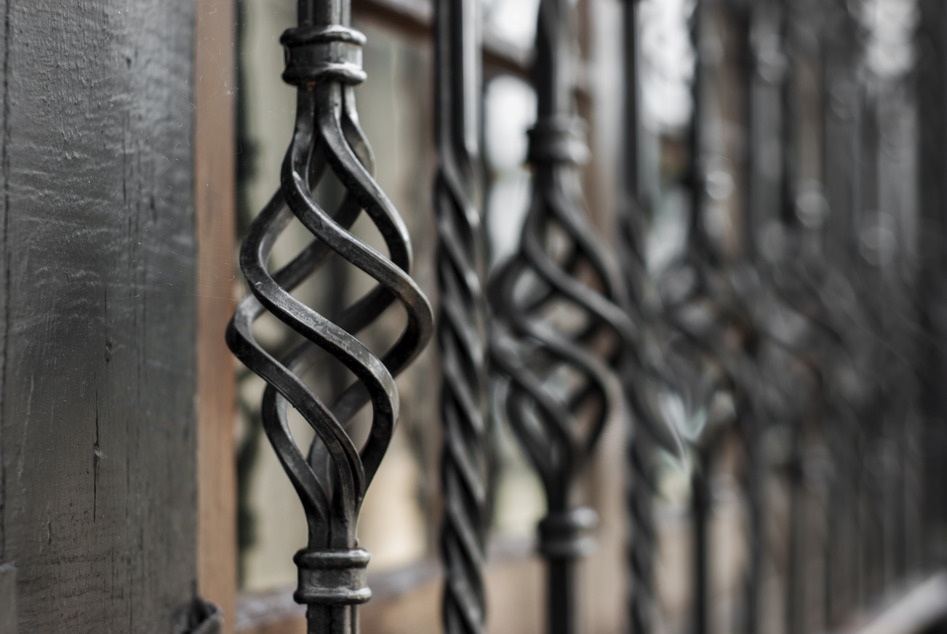Answer these simple questions to gauge whether anti-burglar bars may be right for you:
- Is the burglary rate high or rapidly rising in your neighborhood?
- Do you have basement or ground-level windows hidden by shrubs and outbuildings, and otherwise out of sight to neighbors?
- Do you lack confidence in the response times by local authorities when called to investigate suspicious activities?
- Has your area failed to create and maintain a neighborhood watch program?
- Are you comfortable with the look of security bars on your windows?
If your answers are yes, you’re a candidate for the structural security of burglar bars.
Bar Basics
Home security bars are basically stout metal grids that are screwed or bolted through window frames to the structural framing. The simplest DIY versions have 3 or 4 steel bars set in a metal frame and are available at home improvement centers. More elaborate versions are accented with artistic motifs and scrollwork. Custom-designed bars made by wrought-iron fabricators can cost up to $1,000 each.
There are various types:
- Permanent security bars are designed for constant, long-term use.
- Swing-away bars are hinged for cleaning the window glass or for emergency egress. They’re secured with a padlock or quick-release mechanism available only from the inside.
- Removable bars are designed to be used when bars may detract from appearances. A typical application is for small stores or residences zoned for commercial use. At night, the bars slip into place; during the day, they can be removed and stored out-of-sight.
You may find that your insurance company offers reduced rates to home owners who invest in bars and other security measures. Check with your home insurance agent.
Why Bars on Windows Work
Obviously, they prevent easy entrance into your home. But a large part of their effectiveness is psychological: Burglars prefer to work quickly, quietly, and they don’t like complications. Simply the sight of burglar bars is enough to discourage most home invaders.
Where to Install Bars
Start by installing bars on the windows that are least visible and easiest to reach. Basement windows are particularly susceptible: They’re low, and often hidden in shadows and obscured by foliage. Basement egress windows (larger windows for occupants to escape fire) typically have deep window wells that allow burglars to work out-of-sight of neighbors.
Installing Costs of Home Security Bars
Installation can be left to professionals as a whole-house project, or managed as a series of do-it-yourself jobs. For small windows, including the standard basement type, a do-it-yourself kit will cost $100 to $200 and installation will take about an hour (a little longer for the first one, a little less after you’ve done a few).
Grilles for larger windows and doors cost $300 to $500. Professional installation adds about $150 per opening plus materials. Grille components are available from security firms, some hardware stores, and home centers.
Installation process involves mounting a pair of brackets securely to framing members on either side (or above and below) your window. The structural framing members are directly behind window frames, so you’ll need screws that are long enough to reach the structural members. The bars are installed between these secure anchors.
Most local codes require security bars to have a quick-release feature available from inside the home to allow easy exit in the event of a fire or other emergency.
Interior installation complicates matters for burglars — they’ll have to go through the window first to get to the bars.
All-Around Home Security
Security bars on windows work best when used together with other home security measures.
- Motion-sensor lights click on when anyone gets too close to your house.
- Home security cameras monitor your home while you’re away, and the video streams can be viewed on a computer or mobile device.
- Home security systems protect windows and doors, and cost $250 to $700, plus a monthly fee.
By: Larry Erickson:© Copyright 2015 NATIONAL ASSOCIATION OF REALTORS®

